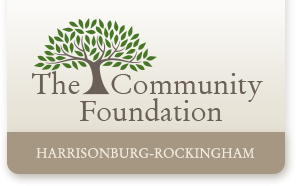Six for the summer: Mid-year reminders about charitable giving
Six for the summer: Mid-year reminders about charitable giving

Donate appreciated stock to your fund at The Community Foundation.
Yes, yes, we absolutely understand how easy it is to write a check when you want to boost your donor-advised or other type of fund at The Community Foundation. If you can remember to pause before you pull out your pen, though, it really does pay off to consider whether appreciated stock would be a better way to add to your charitable giving account. When you give shares of long-term appreciated stock, you can be eligible for a charitable tax deduction at the fair market value of the shares. Then, when The Community Foundation sells the shares and adds the proceeds to your fund, the fund–a 501(c)(3) charity–is not hit with capital gains tax. By contrast, if you were to sell those shares and give to your fund from the proceeds, you’d have a lot less cash to work with. Please reach out to The Community Foundation anytime, 540-432-3863, to learn more about how easy it is to take advantage of this tax-savvy giving technique.
Plan ahead for your business exit.
If you own all or part of a private business, keep in mind that charitable giving can factor into your eventual exit strategy. You could be sitting on substantial unrealized capital gains if the business has grown a lot over time. Upon a sale, capital gains tax will be triggered, reducing the proceeds you get to keep. No capital gains tax will apply, however, to the sale of the portion of the business owned by your donor-advised or other type of fund at The Community Foundation. Plus, you can be eligible for a charitable income tax deduction in the year of the transfer based on the fair market value of the shares–not the cost basis, as would be the case if you’d transferred the shares to a private foundation. Keep in mind that a strategy like this only works with careful planning, so be sure to contact The Community Foundation team well in advance of setting a plan in motion. We are happy to work with you and your advisors to help achieve your charitable and financial goals.
Start paying attention now to the estate tax exemption sunset.
The estate tax exemption–the total amount a taxpayer can leave to family and other individuals during their life and at death before the hefty federal gift and estate tax kicks in–is scheduled to drop, rather precipitously, after December 25, 2025. For 2024, the estate tax exemption is $13.61 million per individual, or $27.22 million per married couple, an increase over 2023 thanks to adjustments for inflation. Later this year, the IRS will issue inflation adjustments for 2025. For 2026, without legislation to prevent it, the exemption is scheduled to fall back to 2017 levels, adjusted for inflation, which would roughly total $7 million per person. That is quite a drop! This means a lot more people–maybe including you–could be subject to estate tax in the not-too-distant future. The team at The Community Foundation is happy to work with you and your advisors to explore how charitable giving techniques can help you avoid estate tax and leave a legacy for the community, especially if you start planning now.
If you can take advantage of the QCD, do it.
A Qualified Charitable Distribution (“QCD”) is a very smart way to support charitable causes. If you are over the age of 70 ½, you can direct up to $105,000 from your IRA to certain charities, including a field-of-interest, designated, unrestricted, or scholarship fund at The Community Foundation. If you’re subject to the rules for Required Minimum Distributions (RMDs), QCDs count toward those RMDs. Through a QCD, you avoid income tax on the funds distributed to charity. Our team can work with you and your advisors to go over the rules for QCDs and evaluate whether the QCD is a good fit for you.
Review your IRA beneficiary designations.
As you review your assets and how they are titled, perhaps in connection with an annual financial and estate plan review, pay close attention to tax-deferred retirement plans such as 401(k)s and IRAs. Typically, you’ll name your spouse as the primary beneficiary of these accounts to provide income following your death or to comply with legal requirements. But as you and your advisors evaluate whom to name as a secondary beneficiary of these tax-deferred accounts, don’t automatically default to naming your children or your revocable trust. You and your advisors may determine that naming a charity, such as your fund at The Community Foundation, is by far the most tax-efficient and streamlined way to make gifts to your favorite causes upon your death and establish a philanthropic legacy. A bequest like this avoids not only estate tax, but also income tax on the retirement plan distributions. That’s why non-retirement fund assets may be better-suited to pass to children and grandchildren.
Embrace a holistic approach to philanthropy.
When you work with The Community Foundation, charitable giving is easy, flexible, and rewarding. As the hub of your charitable giving, The Community Foundation offers a wide range of fund types, services, and ways for you and your family to get involved with the community you love. Many of our fund holders use a donor-advised fund to organize annual giving to charities. We can also help you establish a designated or field-of-interest fund to complement the function of your donor-advised fund. A designated fund allows you to support a specific charity over the long term, while a field-of-interest fund focuses your support on a particular area of community need by leveraging The Community Foundation’s expertise. We’d also be honored to work with you and your advisors to structure a bequest to The Community Foundation in your estate plan to support important causes, as well as The Community Foundation’s work, beyond your lifetime. We are here to help you make the most of your philanthropic intentions, and it is an honor to work together.
This article is provided for informational purposes only. It is not intended as legal, accounting, or financial planning advice.




















